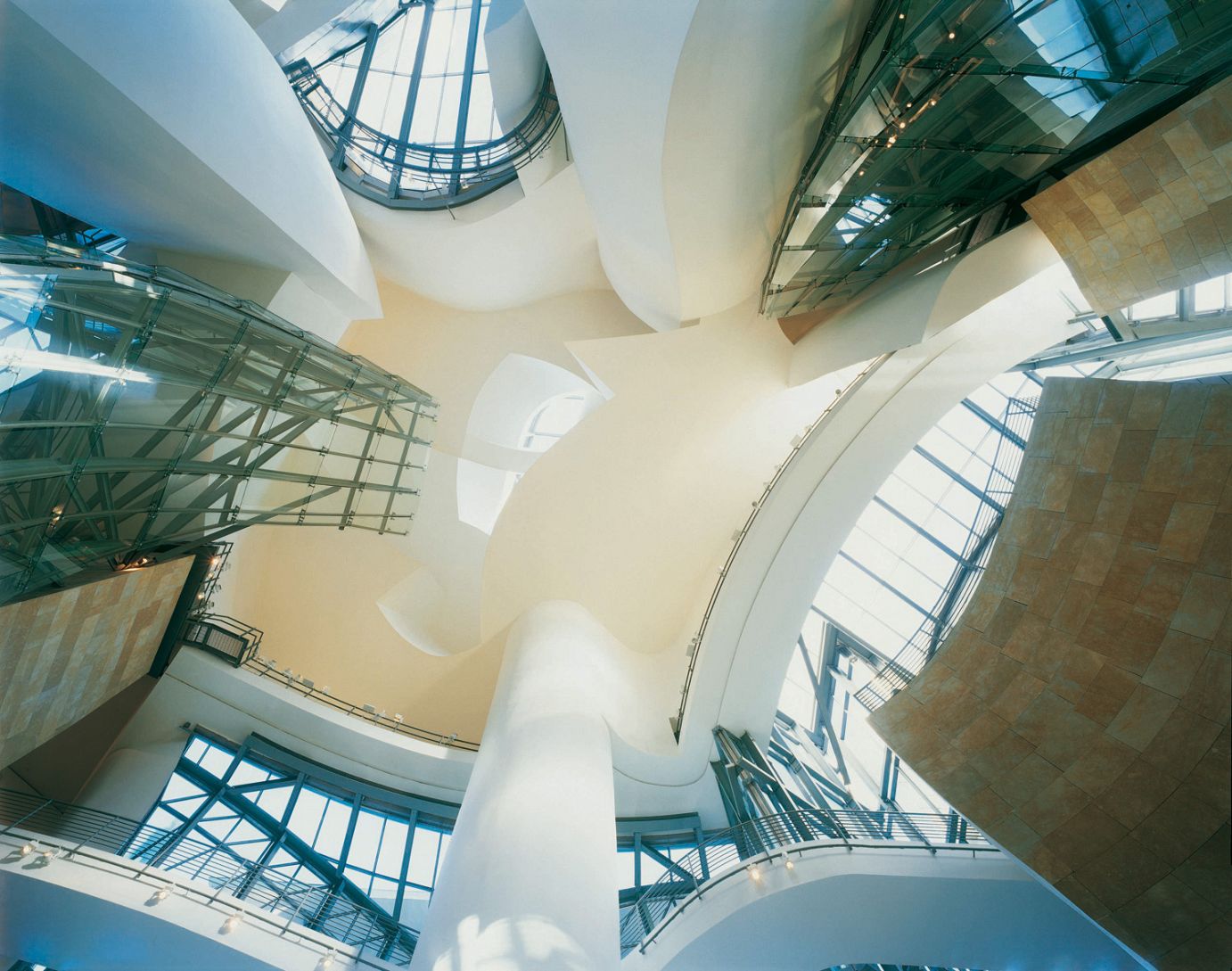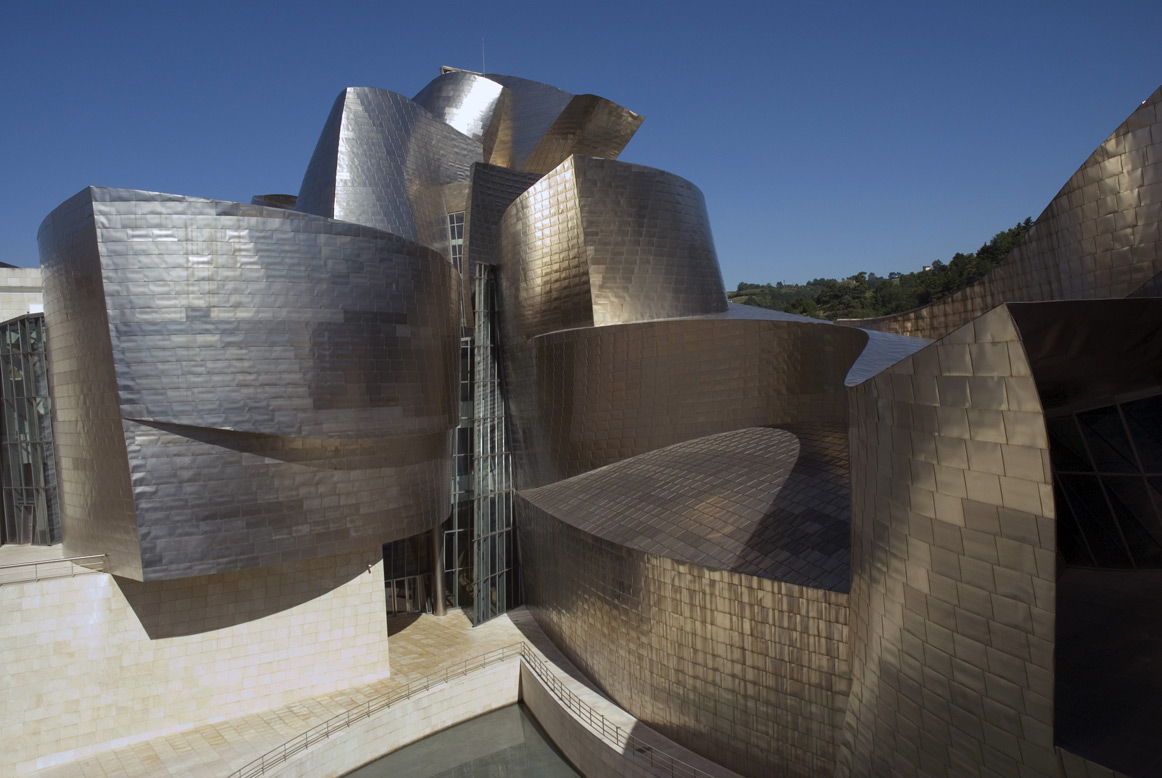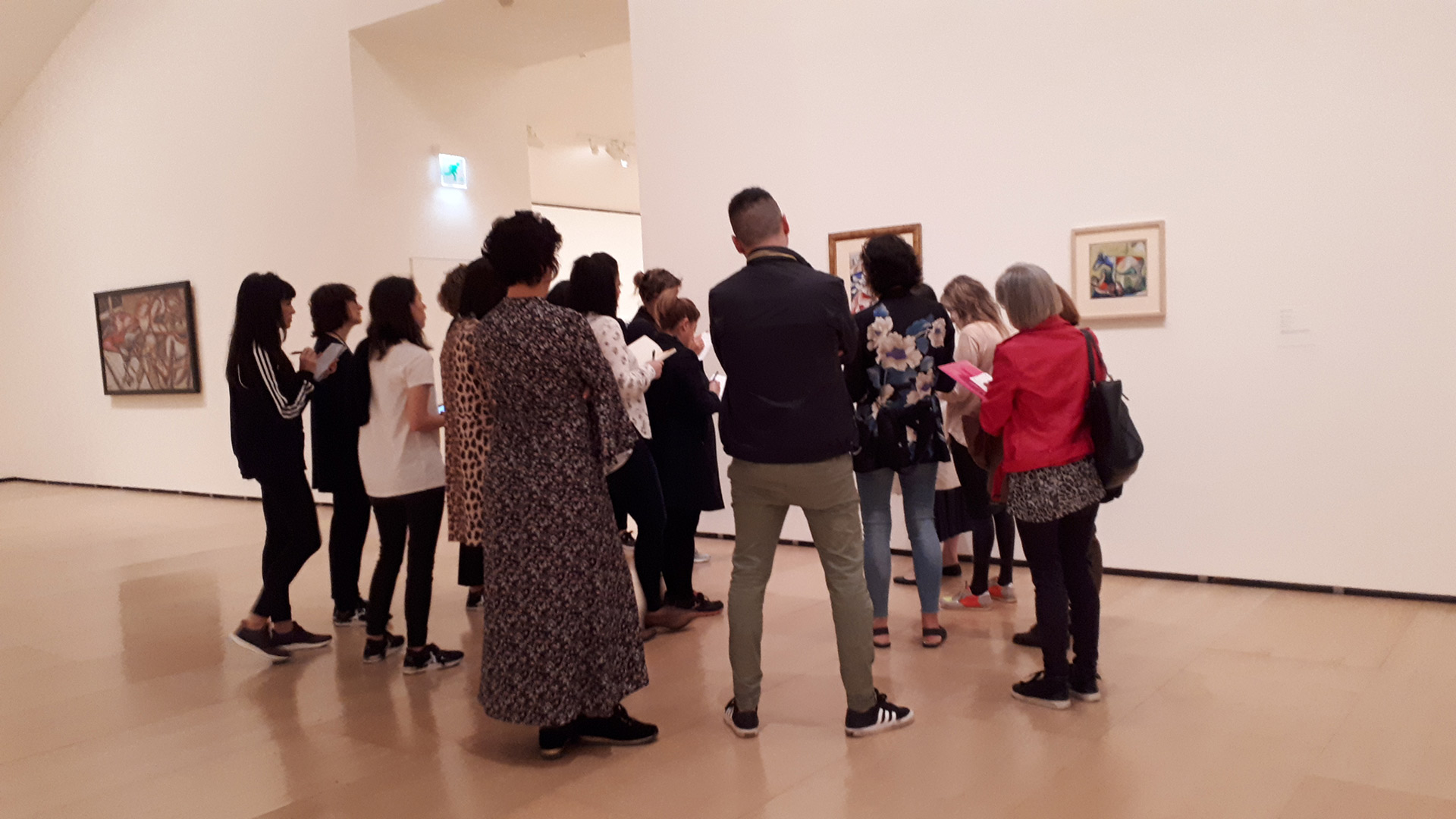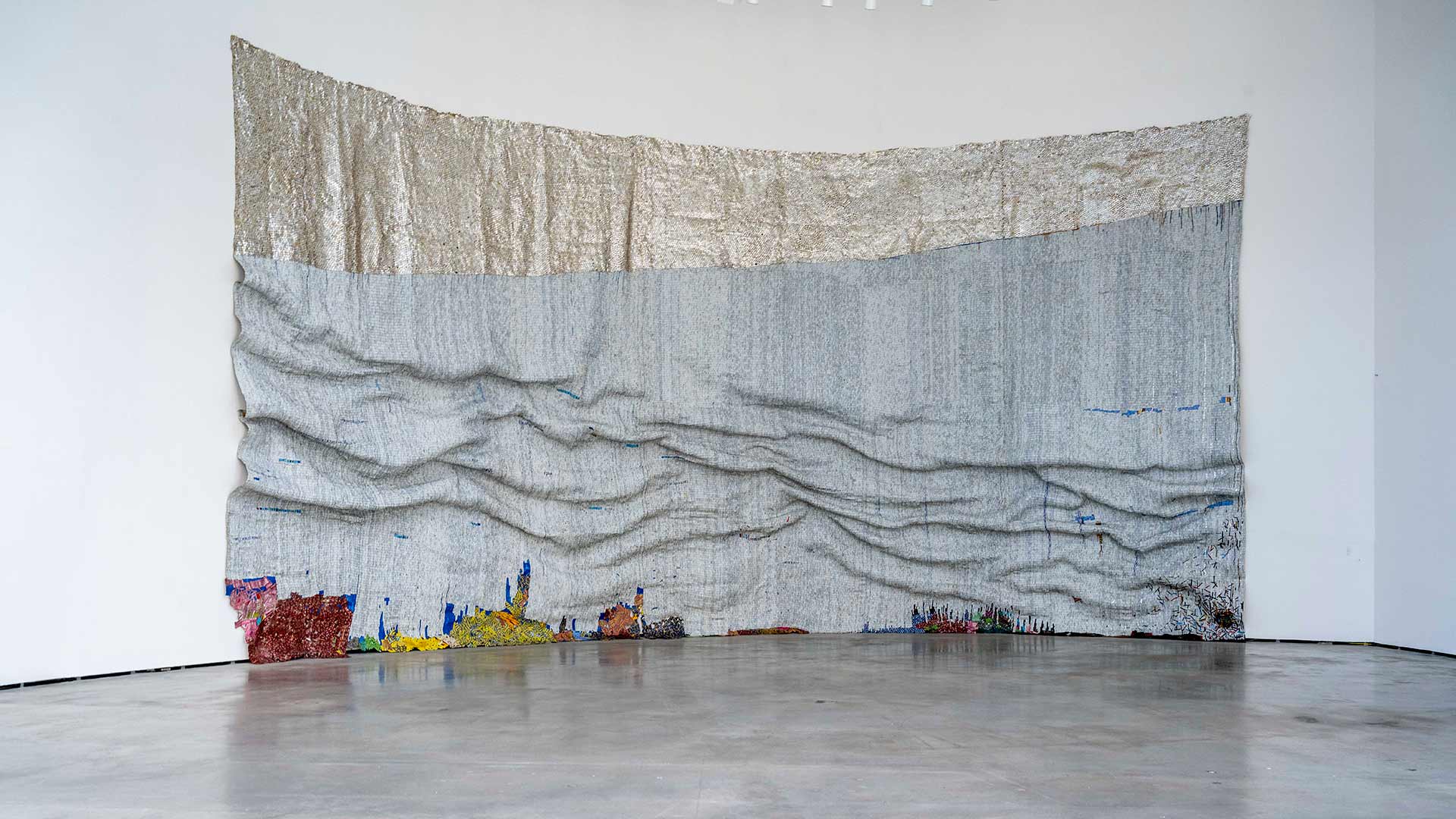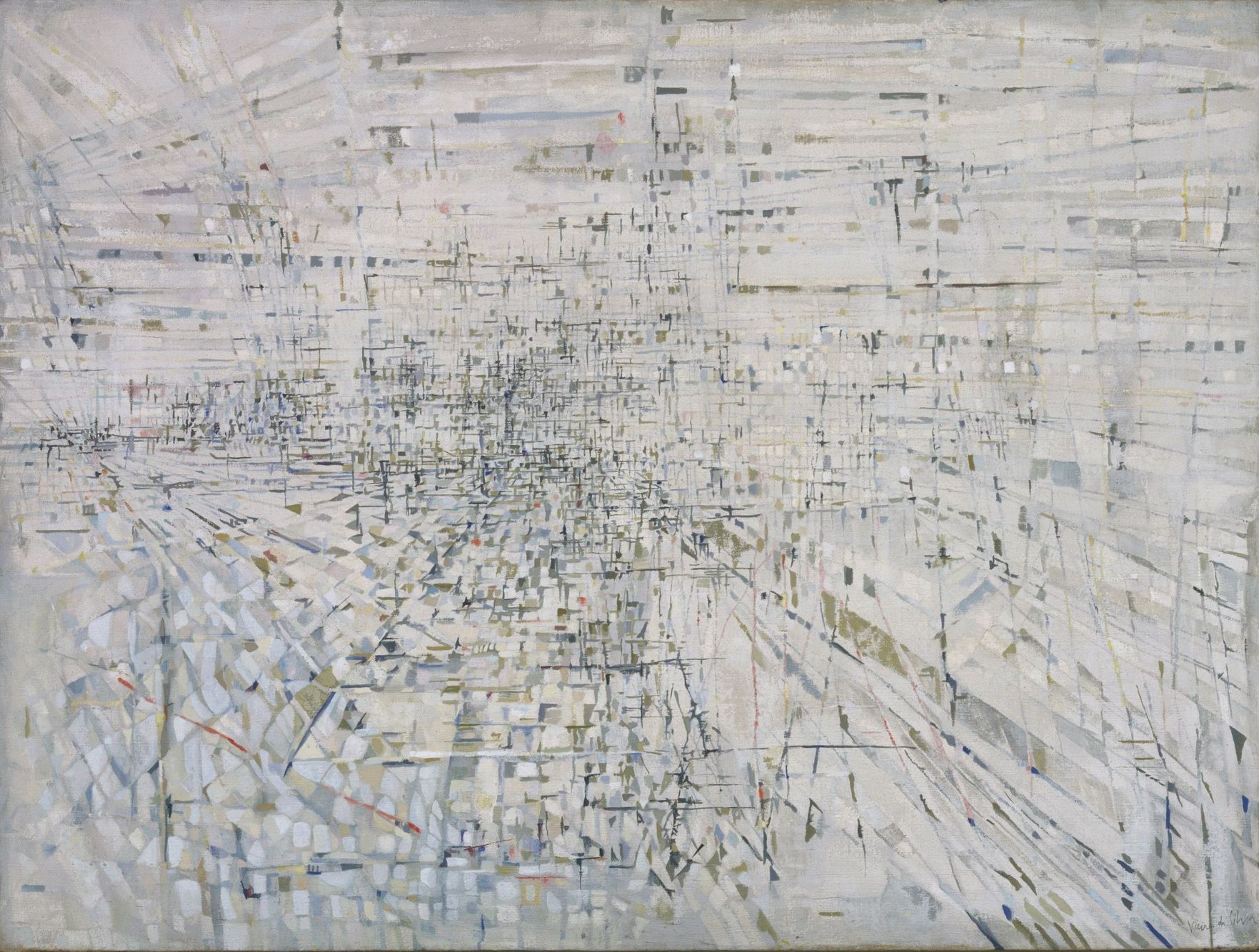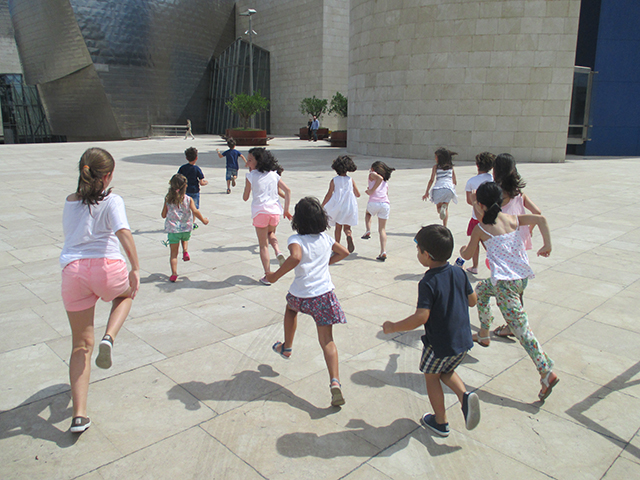
Family Tour
Come to the Guggenheim Museum Bilbao with your family! We have prepared lots of activities and materials for kids, so that you can explore the Museum together. Remember that you can enjoy but you cannot touch art, and that it is better if you hold your kids’ hands. Thank you!
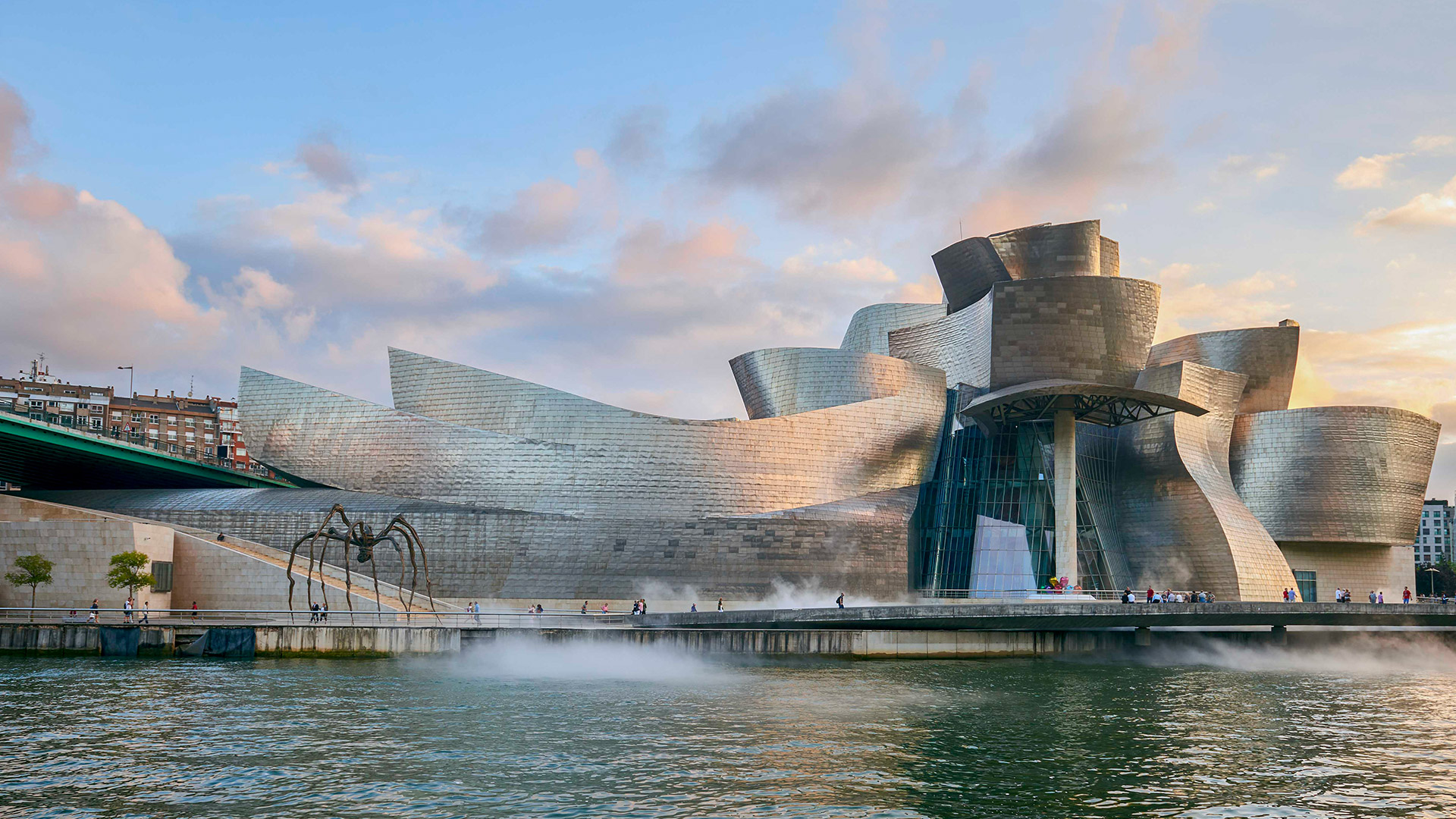
The Museum building
1st floor, Atrium
There is a lot to see in the Museum’s Atrium. The materials used to cover the galleries on the outside can give you an idea of their shapes inside. Can you spot the differences between the galleries clad in titanium and those covered in limestone?
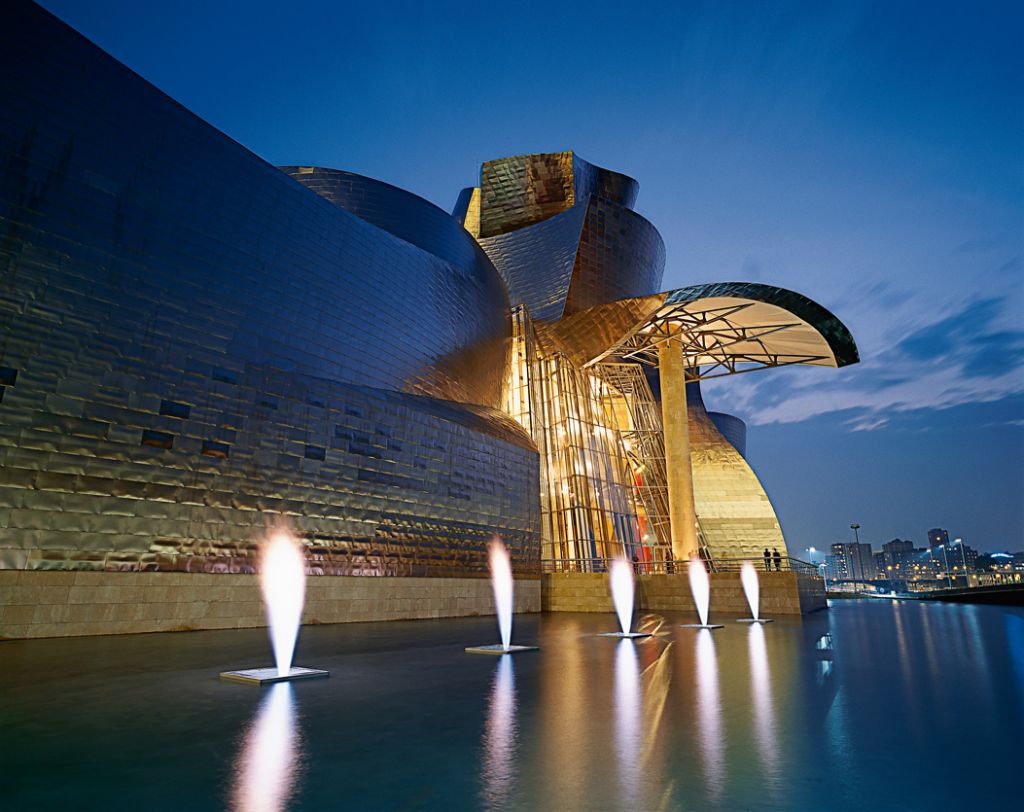
Permanent and Site-specific Works
Plaza, terrace
Some of the works in the Collection are permanently on display either inside or outside Frank Gehry’s building. They include a few site-specific installations designed by contemporary artists especially for the places where they stand.
Puppy, a monumental West Highland White Terrier pup covered in flowering plants, welcomes visitors to the Museum. Have you ever thought about how this giant living sculpture by Jeff Koons is watered? An efficient, sustainable irrigation system is used for Puppy, based on a mix of technologies, bringing as much water as each plant needs—no more, no less.
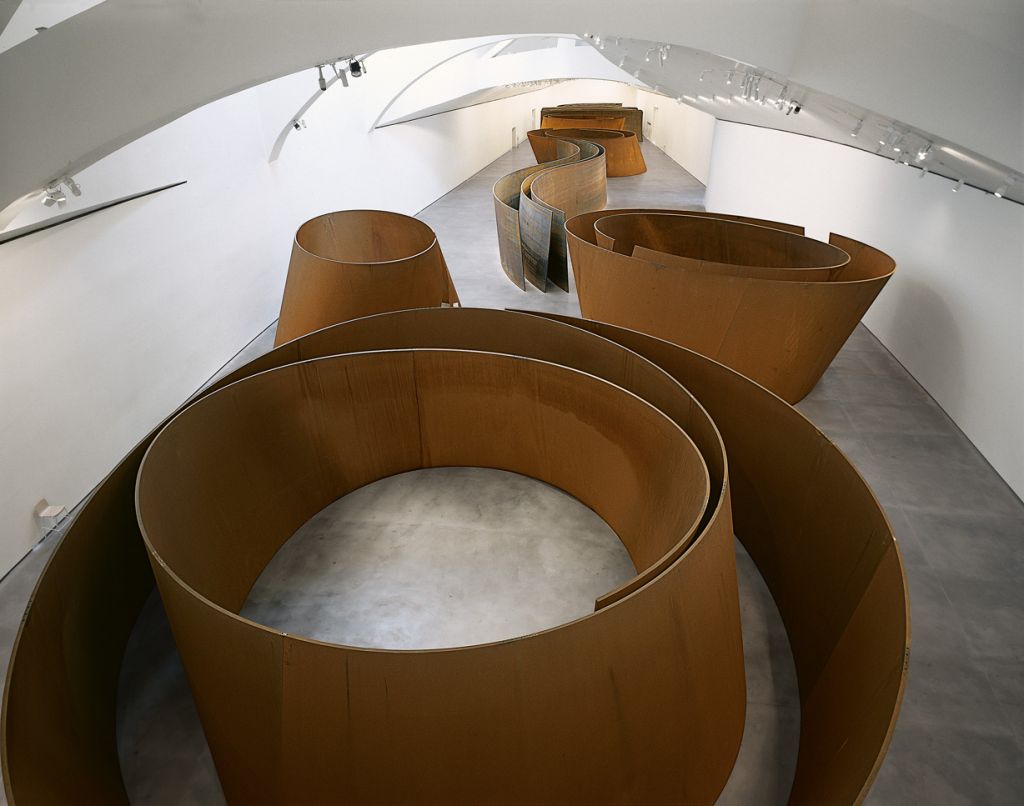
The Exhibitions
1st and 3rd floors
The Museum’s exhibitions give you a lot of opportunities to learn about the new forms of creation and understand works of art. Walk around The Matter of Time, Richard Serra’s installation, exploring the sculptures and looking at their morphing shapes. After your exploration, climb up to the balcony overlooking the installation for a broader view. You will be astonished!
Richard Serra
The Matter of Time , 1994–2005
Weathering Steel
Dimensions variable
Guggenheim Bilbao Museoa
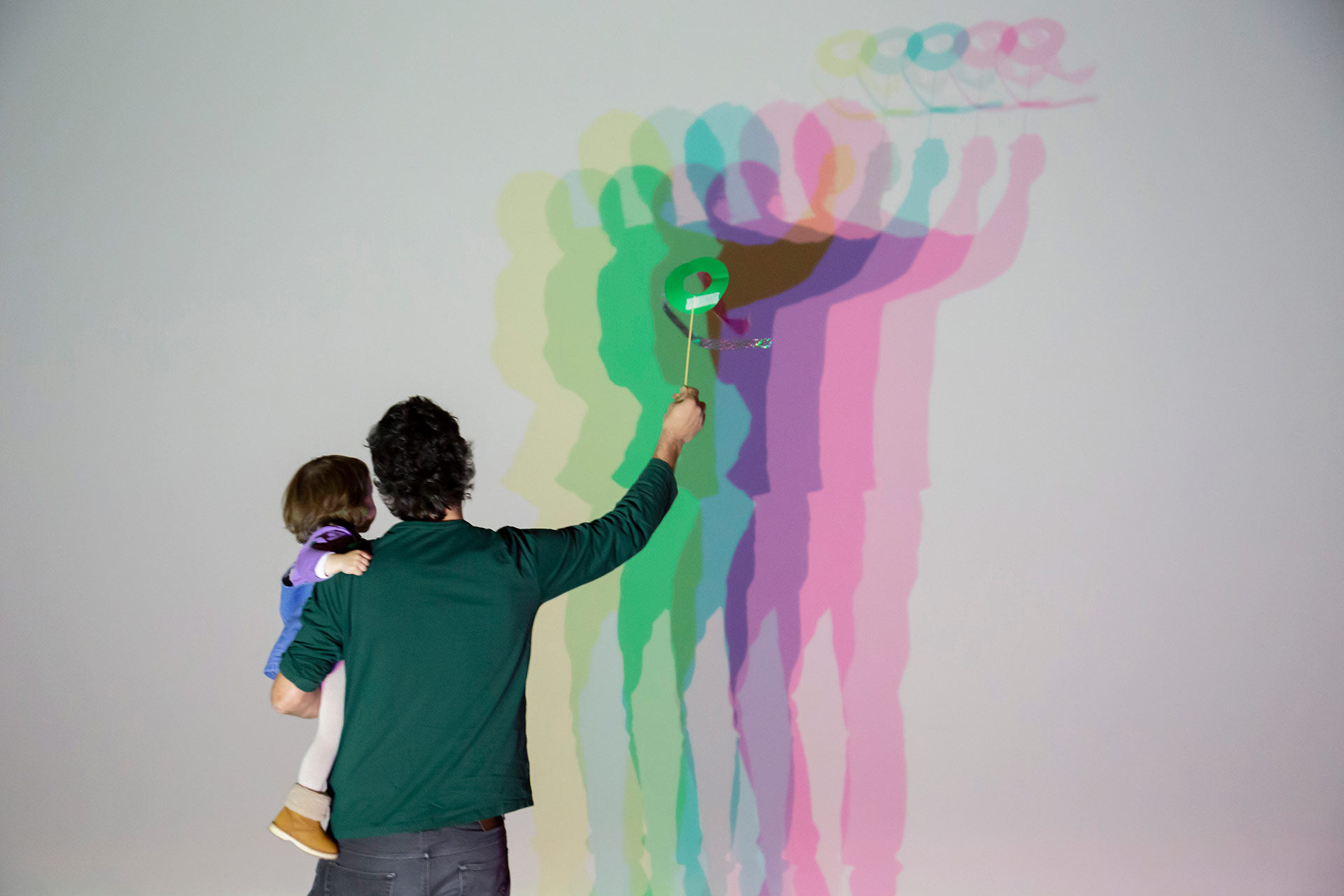
Restrooms/Baby Changing Facilities
1st floor, basement
You will find restrooms on every level in the Museum and baby changing facilities on the 1st floor and the basement.
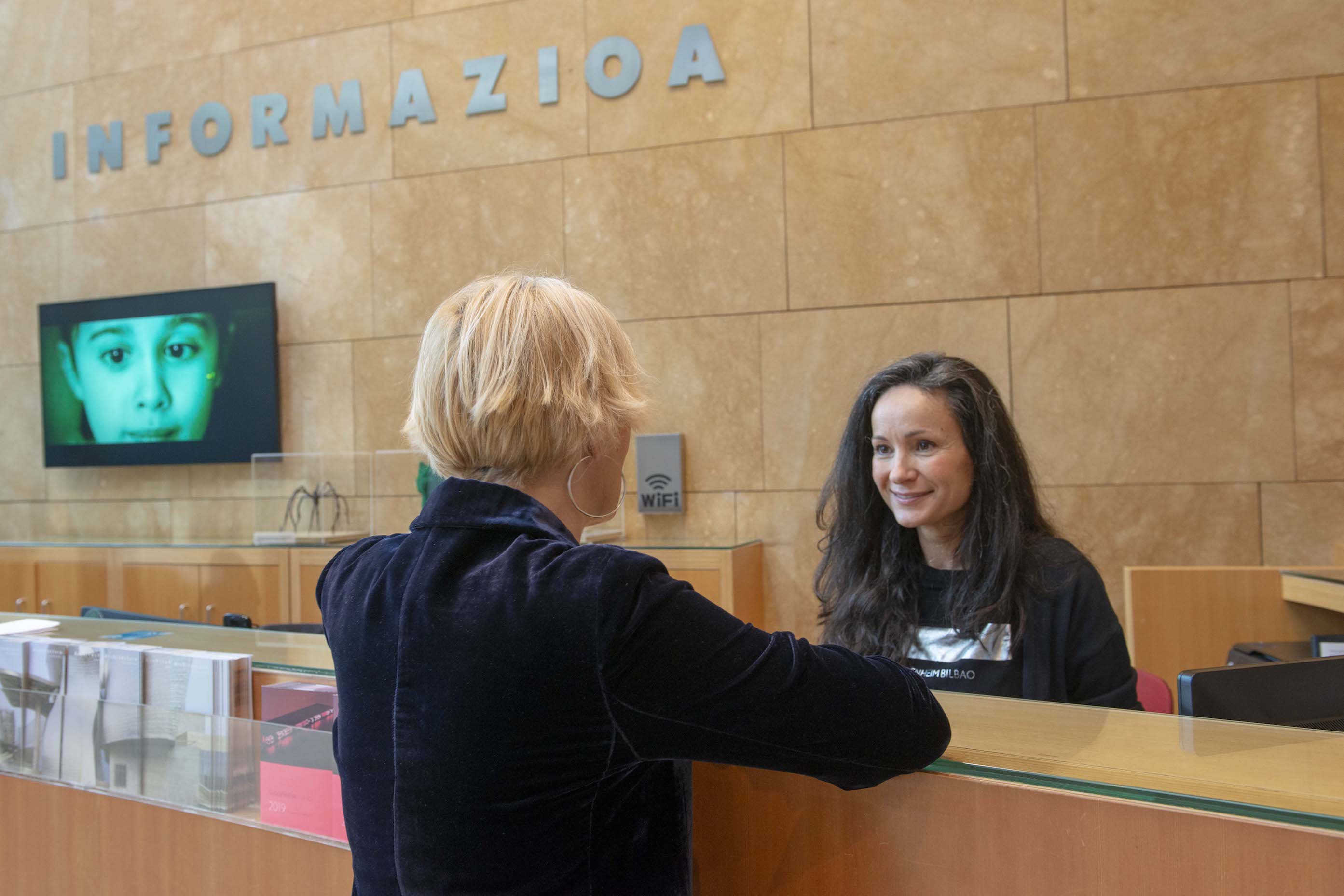
Other services
1st floor, Coatroom
At the Museum cloakroom you will find strollers and baby backpacks to carry your kids around more comfortably.
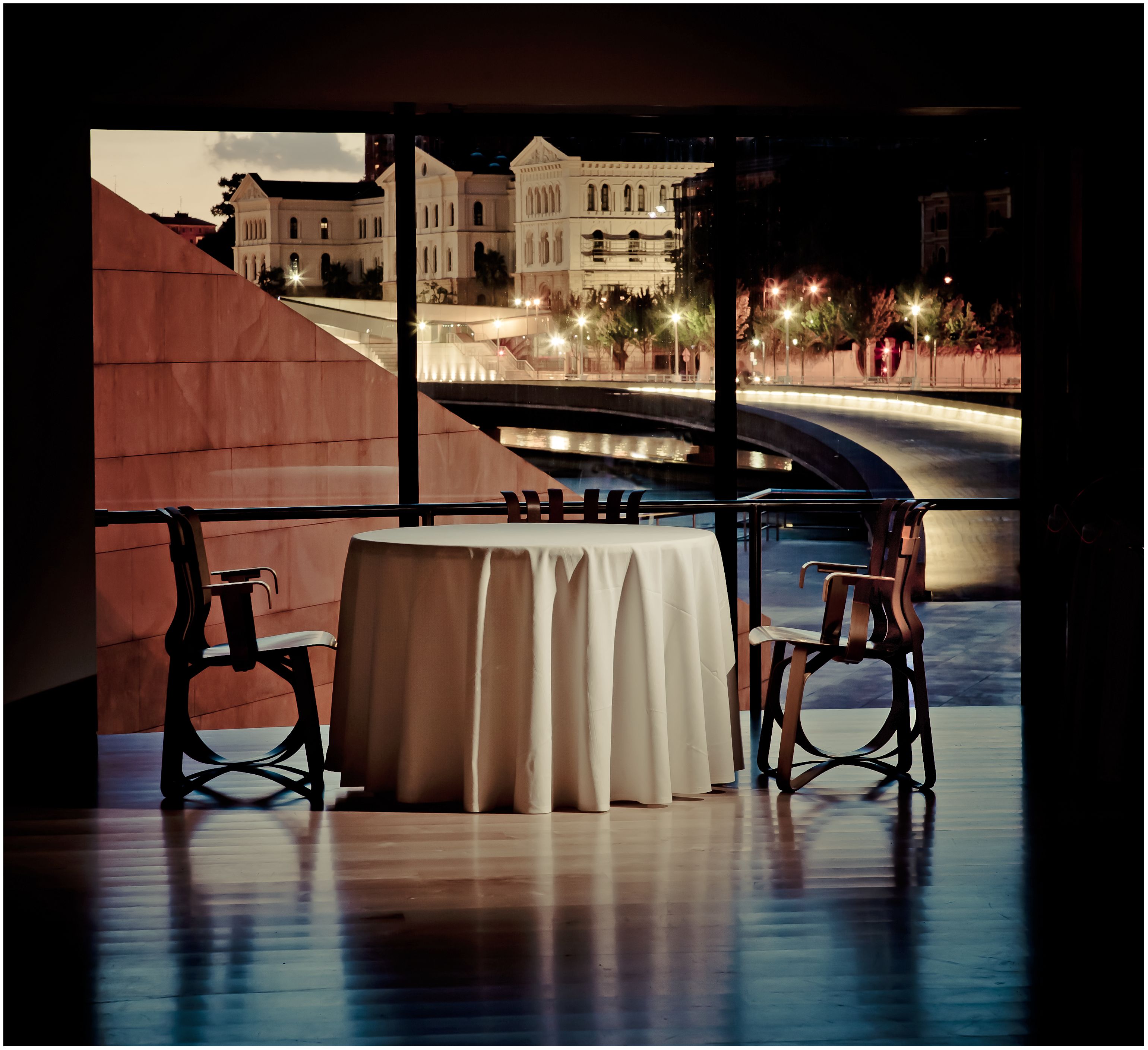
Guggenheim Bilbao Bar and Restaurants
Bar and Restaurants
The Bar Guggenheim Bilbao serves snacks, pintxos, pastries, and beverages, plus a menu of the day. In addition, the Museum affords two world-class culinary experiences, at the Nerua Guggenheim Bilbao, an haute cuisine restaurant, and the Bistro Guggenheim Bilbao, a restaurant wrapped in a more informal atmosphere. The availability of this service depends on the specifics of the health situation related to COVID-19.
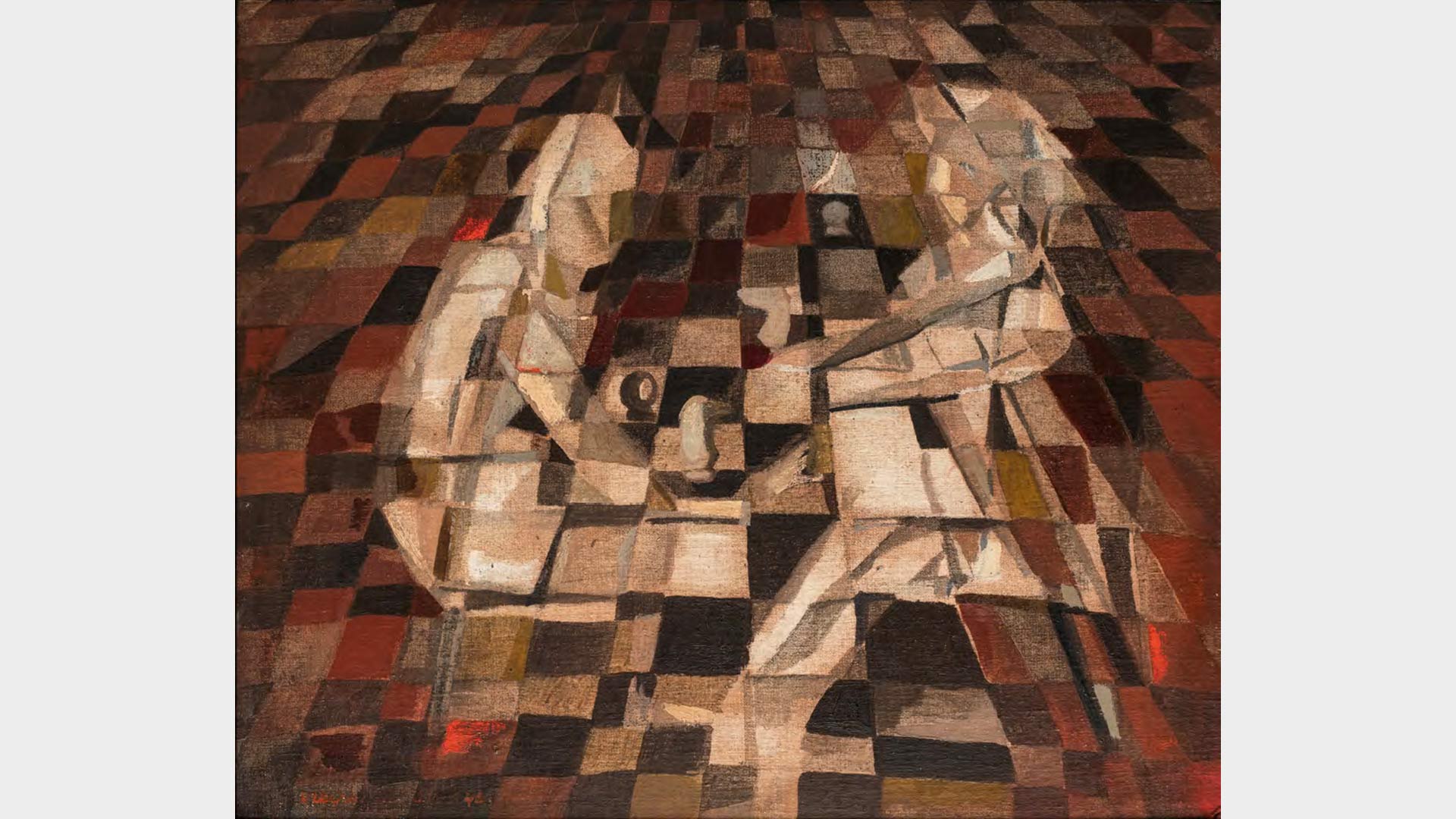
Maria Helena Vieira da Silva
In gallery 105, you will find the paintings of Portuguese artist Maria Helena Vieira da Silva (b. 1908; d. 1992).
When she was a child, Maria Helena did not go to school. Instead, she was homeschooled by private tutors at home, where she grew up surrounded by music, art, and books.
In 1928, she moved to Paris con study art. She left no street, museum, gallery, or corner unvisited in the city. Cities, both real and imaginary, became a motif in her production. How would it feel to be inside one of her paintings? What adventures could you embark on?
Vieira da Silva’s paintings show colorful mosaic or grid-like landscapes, labyrinthine spaces within the canvas that remind us of buildings and also the traditional Portuguese tiles like those decorating the artist’s hometown, Lisbon. Abstract and figurative art come together in many of her paintings, as in Red Chess Board or Chess Players (Échiquier rouge ou Joueurs d’échecs, 1946), shown in the exhibition, where you can see two figures playing chess on a board that goes beyond the game, the players, and even the canvas itself. Who do you think will win the game?
Red Chess Board or Chess Players (Échiquier rouge ou Joueurs d’échecs), 1946
Oil on canvas mounted on cardboard
38.7 x 45.5 cm
Private collection, France-Portugal
Courtesy Galerie Jeanne Bucher Jaeger, Paris-Lisbon

Arts of the Earth
The Arts of the Earth exhibition takes us on a journey through a series of works made with natural materials, inviting us to reflect on the importance of caring for our planet.
In gallery 205, we find delicate pieces made using plant elements, such as the portrait of leaves made by Jean Dubuffet, and one of the iconic trees by artist Giuseppe Penone, who progressively carved around the knots of a wooden beam, gradually bringing back the previous form of the tree that had been cut and turned into an industrial beam. How old do you think the tree that Penone has made reappear is?
As we move through to the next gallery, 206, we come across an astonishing mound of earth with a hint of cinnamon, created by Delcy Morelos. In gallery 207, a series of artworks made using living organisms occupy the space, such as the Wardian Cases, by artist Isa Melsheimer. These pieces are inspired by the work of naturalists like Charles Darwin, who collected exotic seeds and transported them to Europe in sealed glass boxes that became portable botanical gardens.
In gallery 203, the work of artist Mel Chin combines art and science, proposing a way to decontaminate the soil using plants capable of absorbing heavy metals from the earth. The artist works with the terrain as if creating a sculpture directly on the ground.
Oh, and pay close attention, because you won’t see all the pieces at first glance. Look into the corners to see the hidden work The Ancients, by Asunción Molinos Gordo, a series of nests that will remain empty until the arrival of spring. Can you guess which birds might make a home in them?
Asunción Molinos Gordo
Los Antiguos (The Ancients), 2024
Mixed technique, clay and straw
Variable dimensions
Courtesy of the artist and Travesía Cuatro, Madrid
© Asunción Molinos Gordo, Bilbao 2025

